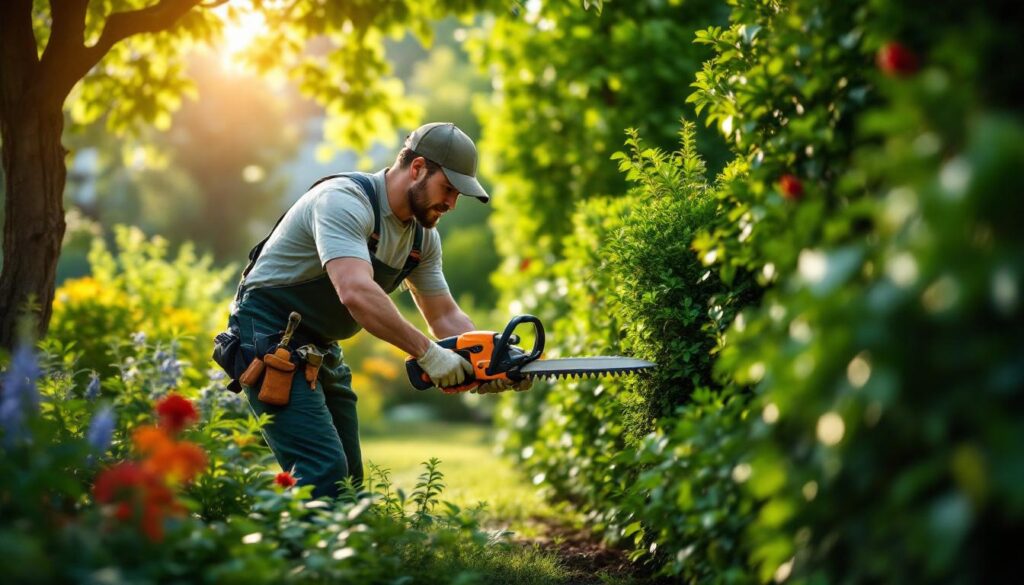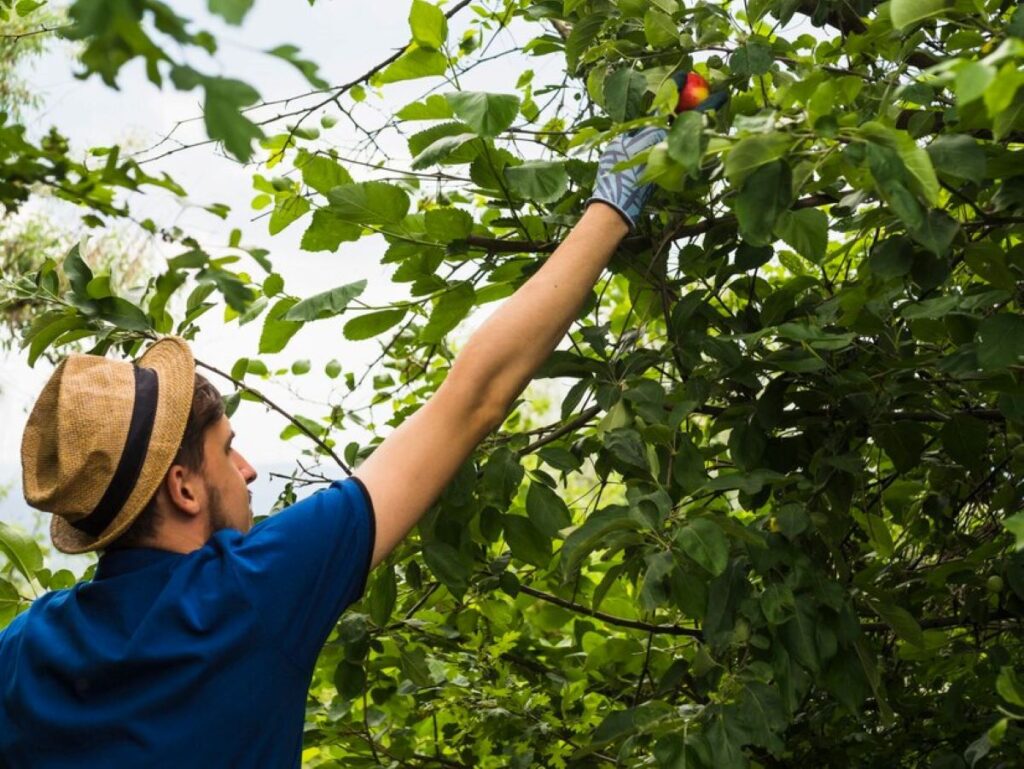Tree Pruning Cost: What Homeowners Should Expect to Pay
What Should Homeowners Know About Tree Pruning Costs?
Understanding tree pruning cost becomes essential when you’re planning your property’s annual maintenance budget. Tree maintenance expenses can vary significantly based on multiple factors, making it crucial for homeowners to grasp what influences pricing before committing to any service.
The Benefits of Professional Tree Pruning
Professional tree pruning delivers substantial benefits that extend far beyond aesthetic appeal. You’ll protect your property investment through proper tree health management, preventing costly damage from falling branches or diseased limbs. Regular pruning enhances your trees’ structural integrity, promoting healthy growth patterns that reduce long-term maintenance needs.
Why Safety Matters in Tree Care
Safety considerations make professional services invaluable. Certified arborists possess the expertise to identify potential hazards, disease symptoms, and structural weaknesses that untrained eyes might miss. They understand species-specific requirements, ensuring your trees receive appropriate care without causing damage through improper techniques.
How Professional Tree Pruning Saves You Money
The financial investment in professional tree pruning pays dividends through:
- Increased property value from well-maintained landscapes
- Reduced insurance claims from preventable tree-related damage
- Extended tree lifespan through proper health management
- Lower emergency costs by addressing issues proactively
You’ll find that budgeting for regular tree maintenance proves more economical than dealing with emergency removals or property damage. Professional arborists provide detailed quotes that outline specific services, helping you plan your tree maintenance expenses effectively whilst ensuring your trees receive the care they need to thrive.
What Factors Influence Tree Pruning Cost for Homeowners?
1. Tree Size
Tree size represents the primary pricing factor when determining pruning costs. Small trees under 8 metres typically require basic equipment and minimal labour, whilst large trees exceeding 15 metres demand specialised equipment, extended work hours, and additional safety measures. Medium-sized trees between 8-15 metres fall into the mid-range pricing category, requiring moderate equipment and expertise.
2. Species-Specific Requirements
Species-specific requirements significantly impact labour intensity and pricing. Native Australian trees like eucalyptus require specialised knowledge due to their unique growth patterns and potential hazards. Ornamental trees such as Japanese maples demand delicate handling and precise cuts, increasing labour time. Palm trees present unique challenges with their fibrous structure, requiring different tools and techniques compared to traditional hardwood species.
3. Tree Health
Tree health directly affects both complexity and cost. Healthy trees allow for straightforward pruning procedures, whilst diseased or pest-infested trees require additional safety precautions, specialised disposal methods, and potential treatment applications. Dead or dying branches create hazardous working conditions, necessitating extra care and time.
4. Location and Accessibility
Location and accessibility create substantial pricing variations. Trees positioned near power lines, buildings, or in confined spaces require rope access techniques and careful branch lowering systems. Properties with limited vehicle access prevent the use of larger equipment, forcing arborists to rely on manual methods that increase labour time significantly.
5. Job Complexity
Job complexity encompasses multiple factors including:
- Number of cuts required
- Precision shaping needs
- Debris removal requirements
- Permit acquisition for protected species
- Coordination with utility companies
These pricing factors combine to create unique cost structures for each property, making professional assessment essential for accurate quotations.
How Much Does Professional Tree Pruning Typically Cost?
Understanding the average tree pruning cost helps you budget effectively for professional tree care services. Professional tree trimming prices vary significantly based on tree size, with small trees (under 8 metres) typically ranging from £150-£400, medium trees (8-15 metres) costing £300-£800, and large trees (over 15 metres) commanding £600-£1,500 or more.
The distinction between pruning and trimming affects your final bill. Basic trimming for aesthetic purposes generally costs 20-30% less than comprehensive pruning, which involves selective branch removal for tree health and structural integrity. You’ll find trimming services focus on shaping and light maintenance, while pruning addresses safety concerns, disease prevention, and long-term tree vitality.
Species-specific pricing reveals notable differences in professional rates:
- Crepe myrtles: £200-£450 due to their manageable size and straightforward pruning requirements
- Native eucalyptus: £400-£900 requiring specialised knowledge of growth patterns and potential hazards
- Oak trees: £600-£1,200 demanding expert assessment of branch weight distribution and structural integrity
- Palm trees: £250-£600 with unique pruning techniques to prevent damage
- Christmas trees, like those developed in the Pacific Northwest, can also vary in price based on their specific needs.
Cost ranges fluctuate based on regional labour rates and market competition. Urban areas like Sydney typically see higher prices due to increased overheads and insurance requirements. You should expect certified arborists to charge premium rates reflecting their expertise, insurance coverage, and professional equipment.
Emergency pruning services command 50-100% higher rates than scheduled maintenance. Storm damage or hazardous branch removal requires immediate attention and specialised safety protocols, justifying the increased investment in professional tree trimming prices.

Why Should Homeowners Hire Certified Arborists for Tree Pruning?
Certified arborists bring essential expertise that directly impacts both safety and long-term tree health. Licensed professionals carry comprehensive insurance coverage, protecting you from liability if accidents occur during pruning work. When tree limbs fall unexpectedly or equipment causes property damage, insured professional tree services handle these costly situations without affecting your homeowner’s insurance.
DIY tree pruning presents significant safety risks that many homeowners underestimate. Working at height with chainsaws and climbing equipment requires specialised training. Improper cuts can cause branches to fall unpredictably, potentially injuring people or damaging structures below. Untrained pruning also creates entry points for diseases and pests, leading to expensive tree removal costs later.
Professional expertise extends beyond basic cutting techniques. Certified arborists understand:
- Species-specific pruning requirements and timing
- Disease identification and prevention methods
- Proper wound closure techniques that promote healing
- Structural assessment to identify weak or dangerous branches
Certifications and qualifications validate an arborist’s competency. Look for credentials from the International Society of Arboriculture (ISA) or Arboriculture Australia. Level 2-5 tree practitioners demonstrate advanced knowledge through rigorous testing. These qualifications ensure your arborist understands tree biology, proper pruning techniques, and safety protocols that protect both workers and property during tree maintenance operations.
What Additional Costs Might Homeowners Encounter Beyond Basic Pruning?
Tree pruning services often involve extra fees beyond the standard cutting and shaping work. You should budget for potential additional expenses that may arise during your tree care project.
Common Additional Costs
Here are some of the most common additional costs you might encounter:
- Pest control treatments: When arborists discover insect infestations or fungal diseases during inspections, immediate treatment becomes necessary to prevent spread to healthy trees. These treatments typically range from £150-£400 depending on the severity and type of pest problem.
- Disease management: Bacterial infections, root rot, or canker diseases require specialised treatments and follow-up care that can cost £200-£600 per tree.
- Emergency services: Storm damage, fallen branches threatening property, or hazardous limbs requiring immediate attention often incur surcharges of 50-100% above standard rates. After-hours callouts during weekends or holidays carry additional fees ranging from £100-£300.
- Soil testing, root zone assessments, and detailed arborist reports may also generate separate charges when comprehensive tree health evaluations become necessary during the pruning process.
When Is the Best Time to Schedule Tree Pruning to Save Money?
The best time for pruning most tree species falls during late winter or early spring when trees remain dormant. This seasonal timing offers significant cost advantages as arborists typically experience lower demand during these months, resulting in more competitive pricing for homeowners.
Cost-saving strategies become apparent when you understand how weather conditions affect labour requirements:
- Winter pruning eliminates the need for extensive cleanup of leaves and foliage
- Dormant trees require less careful handling, reducing labour time
- Arborists can work more efficiently without navigating through dense canopies
- Equipment access improves significantly with bare branches
Scheduling during peak growing seasons (spring through early autumn) increases costs due to heightened demand and complex working conditions. Trees with full foliage require additional time for careful branch selection and debris removal.
Emergency pruning during severe weather events commands premium rates, often 50-100% above standard pricing. You can avoid these inflated costs by addressing potential hazards during routine dormant season maintenance.
Species-specific considerations apply – flowering trees like crepe myrtles benefit from post-bloom pruning, whilst deciduous varieties respond best to late winter care when their energy reserves focus on root systems rather than leaf production.
How Can Homeowners Plan for Long-Term Tree Care Expenses?
Regular maintenance prevents expensive emergency interventions that can cost thousands of pounds when trees become hazardous or diseased. Establishing a proactive approach to ongoing tree maintenance costs helps you budget effectively whilst protecting your property investment.
Annual tree care budgets should account for these routine expenses:
- Fertilisation: £2-5 per square metre of canopy coverage
- Routine pruning: Every 2-3 years for most species
- Health inspections: Annual assessments by certified arborists
- Pest and disease prevention: Seasonal treatments as needed
Fertilisation rates vary based on tree species and soil conditions. Native Australian trees typically require less frequent feeding compared to exotic species, which may need quarterly applications during growing seasons.
Preventative care scheduling reduces long-term costs significantly. A mature oak tree requiring emergency removal can cost £3,000-8,000, whilst regular pruning and health monitoring might total £400-600 annually. Level 5 certified arborists can develop customised maintenance schedules that spread costs evenly throughout the year, making tree care more affordable whilst ensuring optimal tree health and safety.
What Should Homeowners Expect During a Professional Tree Pruning Service?
Understanding the service process helps you prepare for what lies ahead when hiring certified arborists. Professional tree pruning follows a systematic approach that prioritises safety, quality, and transparent communication throughout every stage.
Initial Property Assessment
The inspection phase begins with certified arborists conducting a comprehensive evaluation of your trees and property. Level 5 certified professionals examine tree health, structural integrity, and potential hazards whilst assessing accessibility challenges and proximity to structures. This is where the importance of professional tree risk assessments comes into play. You’ll receive detailed explanations about identified issues and recommended pruning techniques specific to your tree species.

Detailed Quote Development
Quote transparency remains paramount when working with reputable tree service providers. Certified arborists provide itemised estimates that break down labour costs, equipment requirements, debris removal fees, and timeline expectations. You’ll receive clear documentation outlining specific pruning methods, safety protocols, and any additional services required for optimal tree health.
Service Execution and Communication
The customer experience centres on professional communication and meticulous workmanship. Arborists arrive with proper equipment, maintain clean work areas, and provide regular updates throughout the pruning process. You can expect detailed explanations of techniques used, post-pruning care instructions, and photographic documentation of completed work. Professional teams handle all debris removal and site cleanup, leaving your property in pristine condition whilst ensuring compliance with local council regulations.
Conclusion
Budgeting for tree pruning requires careful consideration of multiple factors that influence your investment. You should expect to pay between £150-£800 per tree depending on size, species, and complexity. Planning ahead with these homeowner tips will help you make informed decisions:
- Schedule pruning during dormant seasons for better rates
- Obtain multiple quotes from certified arborists
- Factor in additional costs for diseased or damaged trees
- Consider long-term maintenance plans to prevent costly emergency services
Tree Pruning Cost: What Homeowners Should Expect to Pay varies significantly, but investing in professional services protects both your property value and family safety. Certified arborists provide transparent pricing, proper insurance coverage, and expertise that DIY approaches simply cannot match. Your trees are valuable assets that deserve professional care to thrive for decades to come.
More to Read : Tree Pruning Services Sydney: Trusted Experts Across the Eastern Suburbs

